How to Use a Weekly Planner: Time Management Made Easy
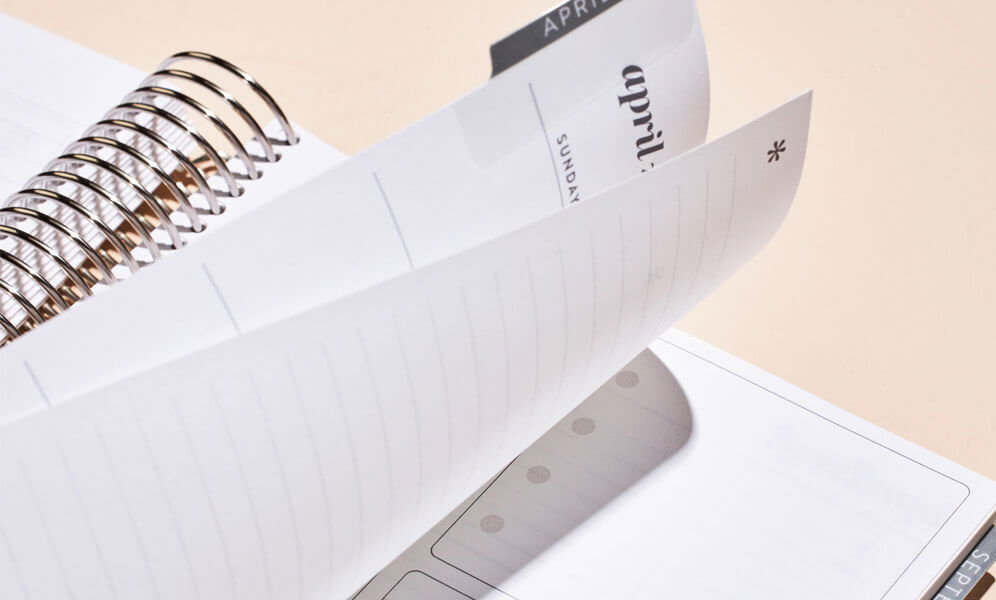
Feeling overwhelmed by your to-do list? Learn how to use a weekly planner effectively and tackle your tasks like a pro! Our guide provides practical tips and strategies from Erin Condren planning experts to help you manage your time efficiently and stay organized. With the right tools and techniques, you can transform your weekly planning routine into a seamless process that keeps you on top of your game.
How to Organize and Use a Weekly Planner
Mastering your weekly planner is essential for staying on top of your tasks and commitments. Here’s how you can organize and make the most out of your weekly planner.
Add Events, Deadlines, and Appointments
Begin by adding all your events, deadlines, and appointments to your weekly planner. This ensures you don't miss any important tasks and helps you visualize your entire week at a glance. Don't forget to allocate time for both work and personal appointments to maintain a balanced schedule throughout the week. Including all your commitments in one place makes it easier to see potential scheduling conflicts and manage your time effectively.
Break Down Bigger Goals and Projects Up Into Actionable Steps
Break down larger goals and projects into smaller, actionable steps. This makes them more manageable and helps you track your progress more effectively. For example, if you have a significant project, divide it into smaller pieces that you can tackle day by day. Breaking down tasks into smaller, manageable chunks prevents you from feeling overwhelmed and ensures steady progress towards your goals.
Set Weekly Goals and Priorities

Set clear weekly goals and priorities. This helps you focus on what’s important and ensures you make steady progress toward your larger objectives. Using your weekly planner to set these goals helps keep your to-do list organized and manageable. Clearly defined priorities can guide your daily activities and help you stay on track throughout the week.
Use Time Blocking to Schedule Daily Tasks
Utilize time blocking to schedule your daily tasks. Assign specific blocks of time for different activities to improve productivity and ensure you allocate time for all your important tasks. This method is excellent for keeping track of tasks and ensuring that you stay focused throughout the day. Time blocking helps in creating a structured day, reducing distractions, and maximizing productivity.
Schedule In Buffer Time
Include buffer time in your schedule to account for unexpected tasks or delays. This helps you stay on track even when things don’t go as planned. Scheduling buffer time allows you to manage your weekly schedule more effectively and avoid feeling overwhelmed by unexpected events. Buffer times act as a cushion, giving you flexibility to adapt to changes without compromising on important tasks.
Create a Monthly Overview for Big Picture Planning
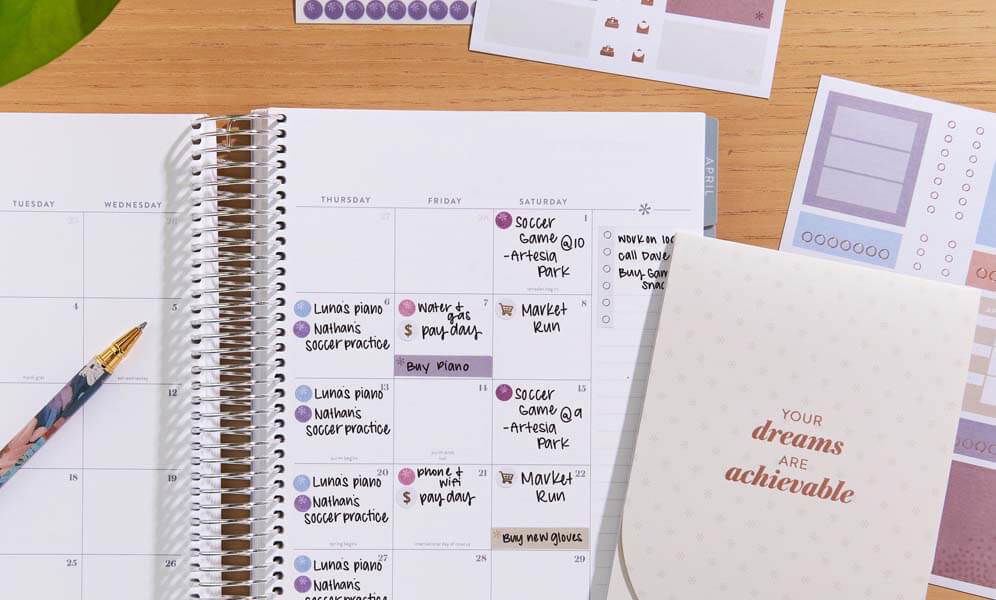
Use the monthly calendars in your weekly planner to create a monthly overview. This allows you to see the bigger picture and plan your weeks in the context of your monthly goals and commitments. A monthly planner can be a helpful tool in providing a broad view of your monthly and weekly plans and ensuring that you meet your targets for the entire month. A calendar planner with both weekly and monthly overviews helps in aligning your weekly tasks with long-term objectives and milestones.
Personalize Your System with Stickers and Color-Coding
Make your weekly planning system more fun and personalized by using stickers and color-coding. This not only makes your planner visually appealing but also helps you quickly identify different types of tasks and events. Personalizing your planner with stickers can make tracking tasks more enjoyable and visually distinct. Customization can boost your motivation to use the planner consistently and keep track of various categories of tasks.
Related: Stick to stylish organization with How to Use Stickers in Your Planner.
Make It a Daily Habit
Consistency is key. Make it a habit to use your weekly planner daily. This ensures you stay organized and on top of your tasks and commitments. Reviewing your planner at the start and end of each day helps keep your schedule on track and ensures that you don’t miss any important tasks. A daily review session helps in adjusting plans based on the day's progress and prepares you for upcoming tasks.
Be Flexible
While weekly planning is important, flexibility is equally crucial. Be open to adjusting your plans as needed to accommodate changes and new priorities. Flexibility allows you to adapt to unexpected changes in your schedule without feeling stressed. Being adaptable ensures that you can handle unforeseen circumstances while still achieving your goals.
Choosing the Right Weekly Planner for You
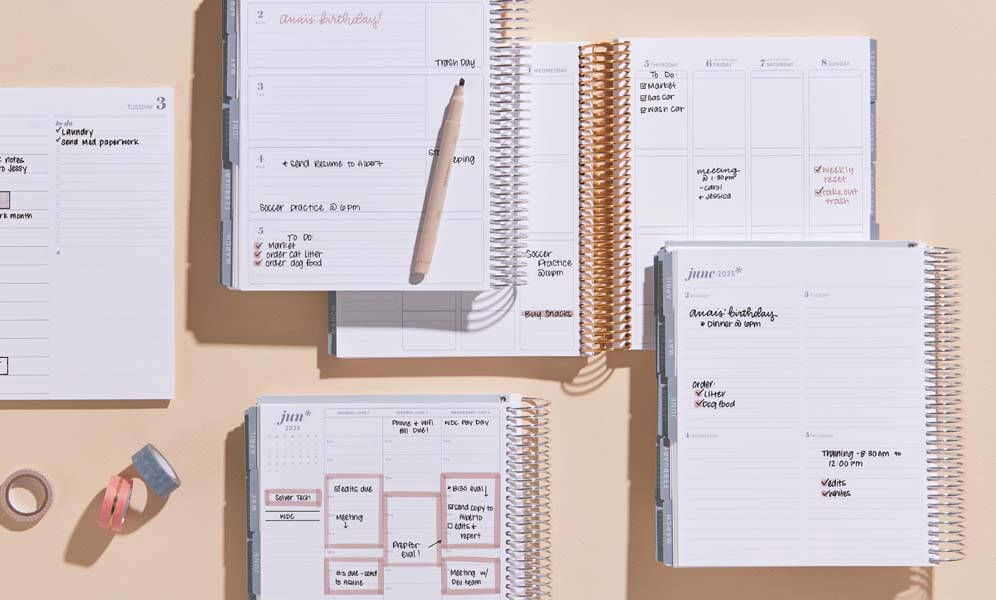
Selecting the right weekly planner is crucial to making your weekly planning process effective and enjoyable. Here are some tips to help you choose the perfect calendar planner for your needs.
Related: Learn more about all the different types of planners + how to choose.
Size Matters
Consider the size of the planner that best fits your needs. Whether you prefer a compact planner for portability or a larger one for more writing space, choose a size that suits your lifestyle. The size of your planner should match your specific needs and preferences for daily planning. A portable planner can be handy for on-the-go planning, while a larger planner provides ample space for detailed notes and schedules.
Related: Check out Your Guide to Different Planner Sizes + How to Choose.
Paper Quality
Opt for a planner with high-quality paper to minimize ink showing through and enhance your writing experience. Erin Condren planners are known for their premium paper quality. Good paper quality can make a significant difference in your daily planner usage, providing a better writing experience and reducing ink bleed. High-quality paper enhances the durability of your planner and ensures it can handle various types of pens and markers.
Layout and Customization
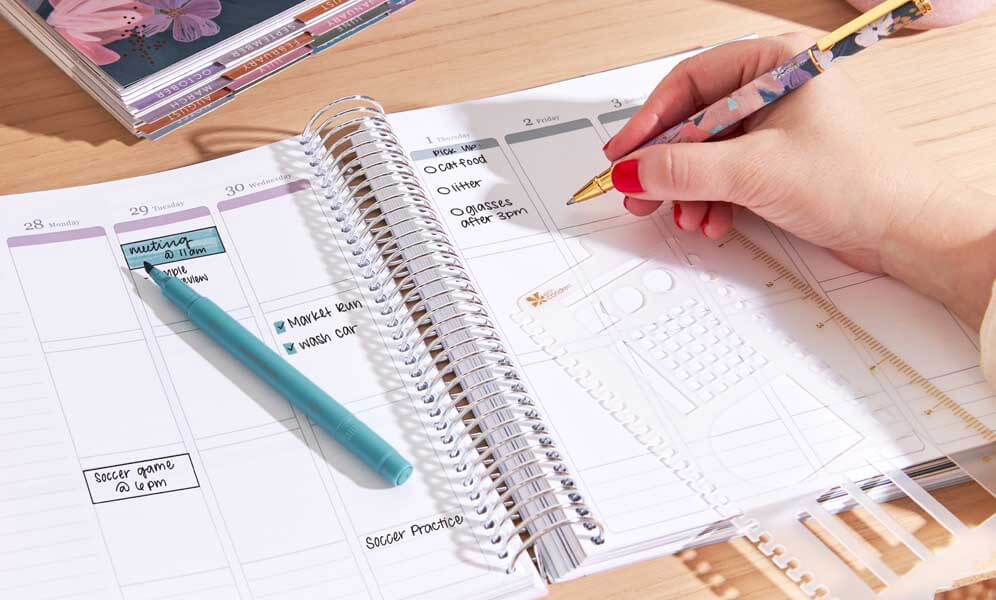
Choose a calendar planner layout that works best for you. Whether you prefer vertical, horizontal, or hourly layouts, select one that complements your planning style. Customization options like interchangeable covers and additional accessories can also enhance your planning experience. Different layouts can help you track your tasks more efficiently and suit various planning needs. Customization allows you to tailor the planner to your unique workflow and preferences.
Related: Explore 7 Classic Planner Layouts + Creative Ideas for Every Lifestyle.
Binding Options
Consider the binding options available. Erin Condren offers both coiled and ring-bound planners, each with its own benefits. Choose the one that best suits your needs. Binding options can affect how you use your planner daily and how easily you can add or remove pages. The choice of binding can influence the planner's durability and flexibility, making it important to choose one that fits your lifestyle.
Accessories and Extras
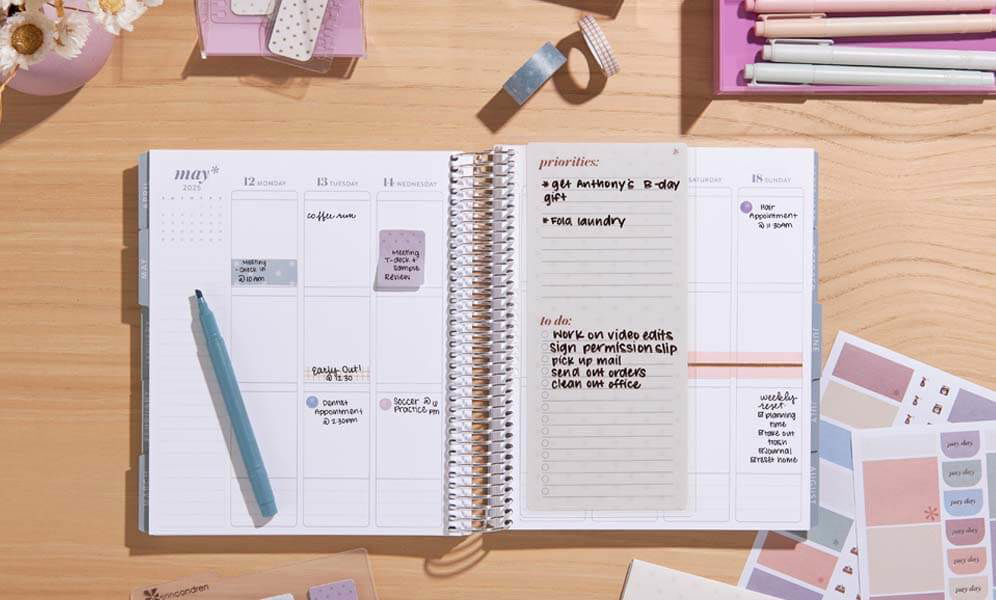
Look for planners that offer additional accessories and extras like stickers, bookmarks, and pen holders. These can add functionality and make planning more enjoyable. Accessories can enhance your planning experience and help you stay organized and motivated throughout the year. Adding functional extras can make your planner a comprehensive tool for managing various aspects of your life.
Related Planning Guides
You may also enjoy these other popular, guided planning tips, prompts, and inspiration from our experts:
- How to Organize Your Planner
- Planner Ideas for Beginners
- Daily, Weekly, Monthly Planning Tips
- How to Use a Daily Planner
- How to Use a Planner to Manage Stress
- How to Start Planning: 15 Tips to Start a Planner
- Best Planners(for every goal, style, and schedule)
- Daily vs. Weekly Planner: Find Your Perfect Match
- How to Get Organized When You Are Overwhelmed: 10 Easy Tips
- 20 New Year Writing Prompts for Goal Setting + Personal Growth
- Top 20 Planning Tips from Erin Condren Experts
Utilizing a weekly planner can significantly enhance your time management and organizational skills. By adding events, breaking down goals, setting priorities, and using techniques like time blocking and buffer time, you can stay on top of your tasks and achieve your objectives efficiently. Personalizing your planner and making it a daily habit ensures consistency and helps you adapt to changes seamlessly.
Choosing the right planner is also key to your planning success. Consider the size, paper quality, layout, binding options, and additional accessories to find a planner that best suits your needs and lifestyle. With the right planner and the tips provided, you can master your schedule and make time management a breeze.
Ready to find your perfect planner, or try a new weekly layout to refresh your planning system? Explore all types of planners to customize the right one for your style, schedule, and planning needs.